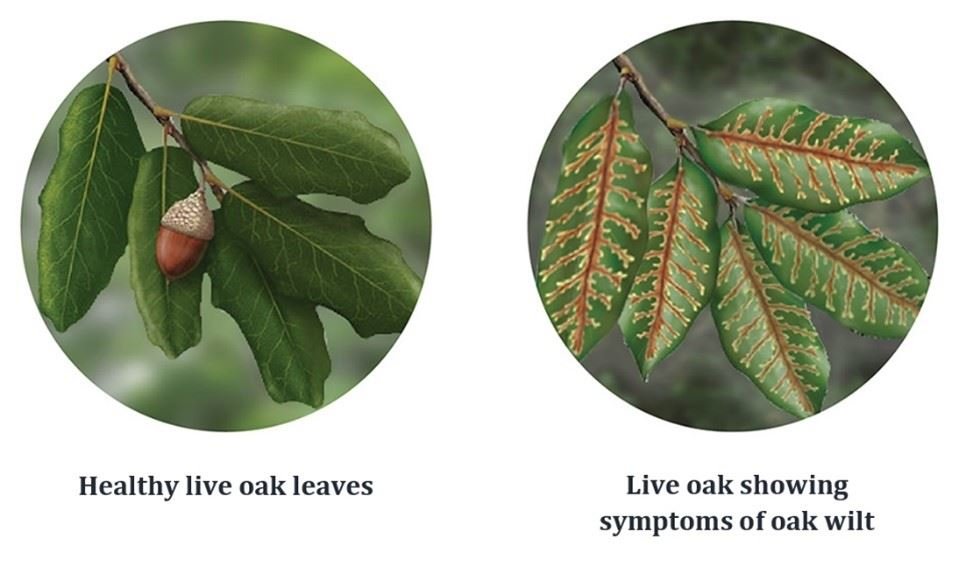
Oak Wilt stands out as one of the most destructive tree diseases in the United States, claiming over 1 million trees in 76 central Texas counties alone. This infectious disease is attributed to the fungus Bretziella fagacearum, which infiltrates and disables the water-conducting system in vulnerable trees. While all oaks can fall victim to oak wilt, some species display higher susceptibility than others, especially Red and Shumard Oaks. (https://tfsweb.tamu.edu/OakWiltFAQS/).
This prevalent disease, which first arrived in North Texas in the 1960s, spreads via fungal spores that can be blown by the wind or attach to insects, usually beetles that feed on tree sap. The disease can also spread underground via connected tree root systems.
Species in the red oak family (including Spanish oak, Shumard oak, and blackjack oak) tend to spread the disease more quickly through their interconnected root systems and rarely survive infection.
Species in the white oak family (including Post oak, bur oak, and Mexican white oak) have been found to be more resistant to the disease and may survive an infection with moderate loss to their canopies.
Live oaks are members of the white oak family and a small percentage (< 20%) may survive infection. Most infected live oak trees will die within 2 to 4 months. The transmission of the fungus through roots is a significant factor in the spread of oak wilt. Live oaks typically form extensive, dense clusters known as “motts,” where their roots interconnect. It is through these root connections that the fungus is transmitted from one tree to another, leading to the formation of patches of dead and dying trees, known as infection centers. These infection centers spread at an average rate of 75 feet per year. (https://texasoakwilt.org/)
Prevention
· Avoid pruning during the spring and summer. Immediately paint all wounds, whether natural or from pruning, with latex paint or a commercial tree dressing to prevent infection.
· Sanitize all pruning equipment with isopropyl alcohol or a household cleaner such as Lysol.
· Promptly remove infected trees to prevent insects or wind from spreading spores to healthy trees.
· Wood from diseased trees will still be infectious for up to a year after cutting and should not be transported to uninfected areas. It can be safely burned, as the fungus is very susceptible to heat. Smoke from burning wood will not transmit spores.
· Trenching can help to prevent oak wilt spreading through connected root systems. Trenches should be at least 4ft deep and should be placed a minimum of 100ft from the infected trees. Infected trees should also be removed from the property, and the remaining healthy trees should be monitored for symptoms for several years.
Treatment
The fungicide propiconazole can be injected into healthy trees as a preventative measure. It has also been proven to treat white oak trees in the early stages of infection.
Learning about oak wilt is the first step in helping prevent it. Texas A&M Forest Service offers a wide range of valuable resources to educate yourself about oak wilt in your region. Access their informative PDF by clicking the link below: https://texasoakwilt.org/backend/Docs/MTI/Know_Your_Hill_Country_Oaks.pdf

Westward – Copyright 2024